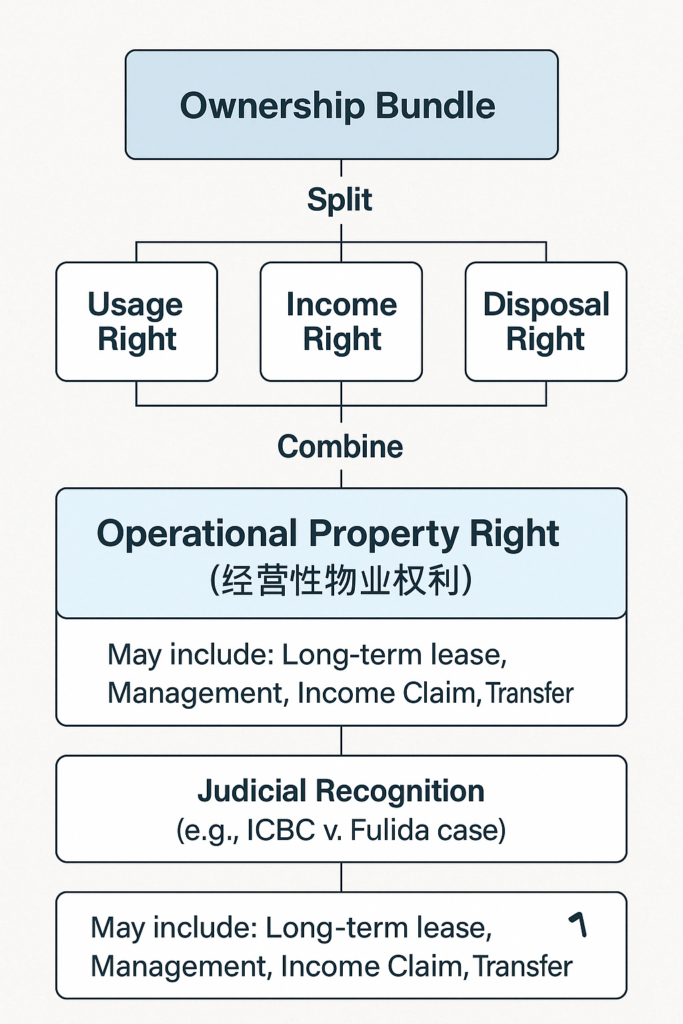In recent years, China’s economic growth has slowed, leading to a more complex financial environment and a sustained rise in non-performing loans (NPLs) for commercial banks. To mitigate credit risks and maintain asset quality, banks have prioritized NPL recovery strategies, with judicial auctions of collateral assets and debt-for-asset swaps being key mechanisms. However, inefficiencies in these processes—ranging from inaccurate asset valuations to prolonged legal procedures—have hindered recovery efforts.
This report examines the challenges in NPL recovery through real-world case studies, identifies systemic bottlenecks in judicial auctions and debt-for-asset swaps, and proposes actionable reforms to enhance recovery efficiency for financial institutions operating in China.
Current State of NPL Recovery and Collateral Disposal
1. Struggles in NPL Recovery Efforts
Despite deploying multiple recovery strategies—such as internal collections, debt restructuring, and third-party collection agencies—Chinese banks face persistent difficulties in reclaiming bad loans.
Case Study: Bank A’s Failed Recovery Attempt
- A small business, facing declining demand and cash flow shortages, defaulted on its loan.
- Bank A initiated internal collections and negotiated debt restructuring, extending repayment terms to ease pressure.
- However, the borrower’s financial condition worsened, rendering restructuring ineffective.
- External collection agencies were engaged, but asset concealment and evasion tactics by the debtor led to minimal recovery.
This case illustrates the limitations of traditional recovery methods when borrowers lack repayment capacity.
2. Judicial Auctions: Low Liquidation Rates and Long Delays
Judicial auctions are intended to maximize collateral value through competitive bidding. However, execution challenges often result in low transaction rates and extended recovery timelines.
Case Study: Bank B’s Commercial Property Auction
- A defaulted borrower’s commercial property was seized for auction.
- Due to poor location and inadequate marketing, the initial auction failed.
- Subsequent price reductions still attracted no buyers, prolonging recovery by 18 months.
- The bank’s capital remained tied up, affecting liquidity.
Key issues:
- Lengthy court procedures (case backlog, slow enforcement)
- Weak bidder participation (limited auction visibility, lack of asset transparency)
3. Debt-for-Asset Swaps: Hidden Costs and Liquidation Challenges
When auctions fail, banks may accept assets in lieu of repayment. However, this approach introduces new complications.
Case Study: Bank C’s Debt-for-Asset Swap Dilemma
- A manufacturing plant (land + equipment) was acquired after three failed auctions.
- Overvaluation by appraisers led to inflated book values.
- The bank inherited aging equipment, costly maintenance, and a remote location with weak resale demand.
- Holding costs accumulated, and finding buyers proved difficult.
Pain points:
- Inaccurate appraisals (overvalued assets increase bank losses)
- High holding costs (storage, maintenance, depreciation)
- Illiquid markets (specialized assets attract few buyers)
Key Problems in Judicial Disposal of Collateral
1. Inaccurate Asset Valuation Undermines Recovery
- Weak appraisal standards: Some valuation firms lack expertise, leading to unrealistic pricing.
- Overreliance on cost method: Ignores market demand, functional obsolescence, and regional economic factors.
2. Bureaucratic Delays in Court-Led Auctions
- Slow case processing: Courts face backlogs, delaying enforcement.
- Multi-step procedures: Litigation → judgment → auction execution takes months (or years).
3. Poor Auction Transparency Deters Bidders
- Limited advertising: Auctions are often only listed on court portals, missing potential buyers.
- Insufficient asset details: Buyers lack data on liens, encumbrances, or physical condition.
4. Unclear Tax Liabilities Increase Buyer Risks
- Ambiguous tax burdens: Buyers may face unexpected VAT, land taxes, or transfer fees.
- High compliance costs: Some courts impose all taxes on purchasers, suppressing bid interest.
5. Post-Swap Asset Management Burdens Banks
- Storage/logistics costs: Banks lack infrastructure to manage seized factories, equipment, or real estate.
- Limited resale channels: Illiquid assets (e.g., niche machinery) require specialized buyers.
Solutions to Improve NPL Recovery Efficiency
1. Reform Asset Valuation Practices
- Strict auditor selection: Banks should partner with accredited, independent appraisal firms.
- Multi-method valuations: Combine income, market, and cost approaches for realistic pricing.
2. Streamline Court Auction Processes
- Digitize enforcement: Online case filing, virtual auctions (e.g., Alibaba’s judicial auction platform).
- Prioritize NPL cases: Courts should fast-track clear-cut default judgments.
3. Enhance Auction Marketing & Transparency
- Leverage e-commerce platforms: List auctions on JD.com, Taobao for broader visibility.
- Detailed asset reports: Disclose environmental assessments, zoning laws, and repair histories.
4. Clarify Tax Policies to Encourage Bidding
- Standardize tax rules: Define buyer/seller responsibilities upfront (e.g., VAT on sellers, transfer taxes on buyers).
- Offer incentives: Local governments could waive fees for distressed asset sales.
5. Optimize Debt-for-Asset Management
- Outsource asset disposal: Partner with distressed-asset investors or industrial liquidators.
- Lease-to-sell models: Generate interim income from idle properties/equipment.
Conclusion: Strengthening China’s NPL Recovery Framework
Judicial auctions and debt-for-asset swaps remain critical for NPL resolution, but systemic inefficiencies demand coordinated reforms. By improving valuation accuracy, accelerating legal processes, and enhancing market transparency, Chinese banks can boost recovery rates and stabilize financial systems.
For foreign investors monitoring China’s NPL market, these reforms signal opportunities in:
✔ Distressed asset acquisitions (undervalued real estate, machinery)
✔ Specialized liquidation services (appraisal, auction platforms)
✔ Debt restructuring advisory (cross-border NPL portfolios)
🥳 Love My Content?
Fuel more free guides with a beer! 🍺
(Every sip makes the keyboard dance!)
Secured via PayPal • No account needed

 SinoLoanHub: Expert Business Loan Solutions for North American Companies
SinoLoanHub: Expert Business Loan Solutions for North American Companies






